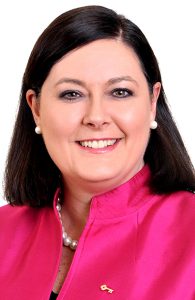
Courtesy KeyBank
By Ruth Mahoney
For most of the American population, retirement is a paradox. We look forward to it, because we want to stop working. We fear it, because we cannot afford to.
People struggle to retire for several reasons. For starters, many of us aren’t saving enough. Even if we are, unexpected expenses such as a child’s college education, divorce, or care for an aging parent can delete resources from the retirement nest egg. However, according to a survey from Bankrate, the number one worry baby boomers have about living a secure retirement is the cost of healthcare.
Healthcare is often the single largest expense in a retired household. For example, a healthy, 65-year-old retired couple can expect to spend approximately $250,000 over the course of their retirement on Medicare premiums. This does not include out-of-pocket expenses or long-term care costs.
While healthcare is the great unknown in retirement planning, there are things you can do to better prepare for future costs. For example, AARP offers a free healthcare cost calculator. After entering in some personal details, it will provide you with your estimated total healthcare costs, the amount covered by Medicare and your estimated shortage. It works equally well for those planning their retirement and those already retired. You can include your spouse, too.
You can also take certain actions today that will reduce your future healthcare costs. Many retirees are purchasing insurance that supplements Medicare, such as long-term care insurance and Medigap and Medicare Advantage. You can also focus on living a healthier life style. Eating right and staying fit make a difference.
Another important factor in determining your future healthcare spending needs is your retirement age. The longer you work, the more you save and delay tapping into savings to pay for healthcare. According to T. Rowe Price, a couple who work until the age of 70 instead of retiring at 60 will more than double their monthly income in retirement.
As with any financial goal—and retirement is a financial goal—the ability to achieve it always comes down to developing and executing a plan.
To plan, you need to have an understanding of your complete financial profile. What are your current income, expenses, assets and liabilities? What is your cash flow? Do you have an existing financial plan? If so, are you executing it, and does it still meet your financial needs and goals?
Several online tools can help you assess your financial health, including the National Foundation for Credit Counseling’s free MyMoneyCheckUp website. You can also work with your personal bank or financial planner. The areas you will want to review are budgeting and credit management, savings and investing, retirement planning and managing home equity.
Do you want to retire early, at 62, or retire at 66? Do you want to be a snowbird? RV around the country? Help your grandchildren finance their education? Leave a legacy and support a nonprofit?
It is important to assess how achievable your goals are when measured against your current financial situation. Ask yourself if the life you envision is realistic. Then prioritize your goals and define what you need to do now, what needs to be done in the next two to five years and what can wait until after.
Finally, take action.
Maximize your savings opportunities. In 2016, individuals age 50 and older can contribute $24,000 per year into a company 401(k). Employer matches can increase this amount. In addition, at age 50 the 2016 Individual IRA and Roth IRA contribution maximum is $6,500.
Investing in a health savings account (HSA) is also worthwhile. The 2016 maximum contribution is $3,350 for individual coverage and $6,750 for family coverage. Participants who are age 55 or older can make a maximum catch-up contribution of $1,000.
HSAs are a good investment vehicle because you own and control the money in your HSA. Decisions on how to spend the money are made by you without relying on a third party or a health insurer. You also are empowered to determine what types of investments to make with the money in the account in order to make it grow.
You should also consider long-term care insurance and other risk management strategies. Protecting your retirement and other assets against potential risks can help you overcome obstacles that may otherwise keep you from achieving your retirement goals.
The important thing is to plan. Even if you get off track and fall behind schedule, you can catch up. You just need to know what the potential obstacles are. The rising cost of healthcare, which is largely unknown, is definitely one of them. But you can prepare for it. Take advantage of available tools and resources, and speak with your financial planner or banker. Retirement should be less about fear and more about security and enjoying the fruits of a life of working with purpose.
Mahoney is president of KeyBank’s Capital Region.
